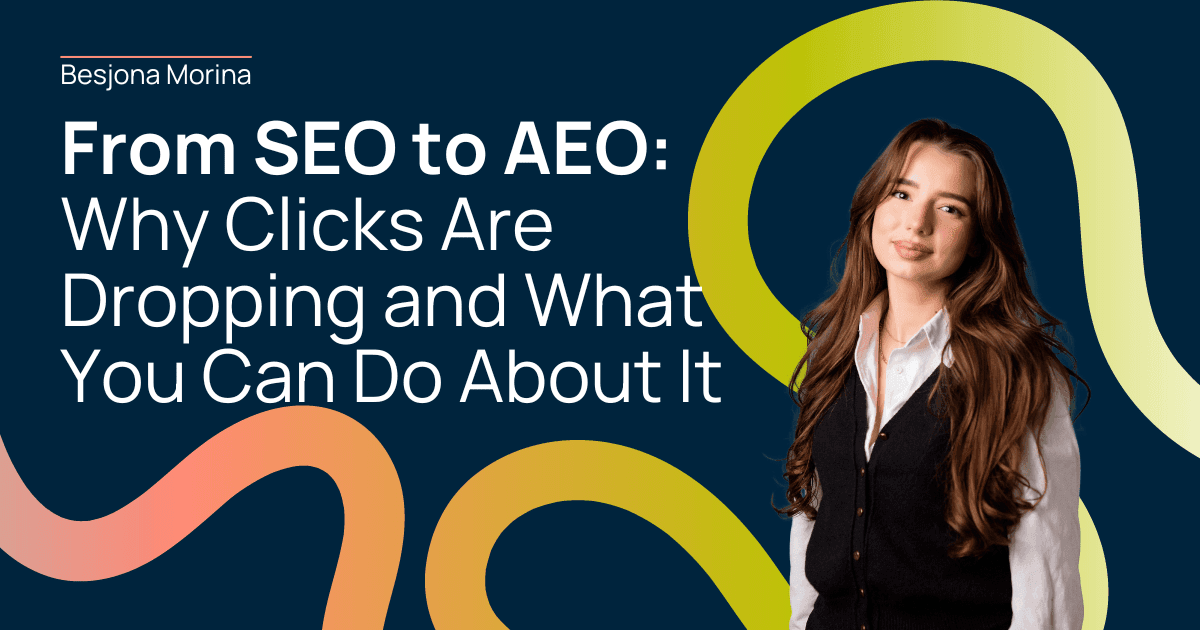Search used to be simple. Someone typed a question, saw ten blue links, and clicked the one that felt most trustworthy. But the internet doesn’t work that way anymore.
Today, Google often answers the question before anyone visits a site. AI-generated summaries, or AI Overviews, now appear above organic results, giving users a complete answer right there on the page without having to click on any links. That shift has changed everything.
For many brands, traffic from search has fallen by 10–25% in the last year. For some, the drop is closer to 35%. Not because rankings got worse, but because people simply don’t need to click. However, this doesn’t mean search isn’t broken. It’s evolving, from finding pages to delivering answers, and that means it’s time for a new playbook.
What’s Really Happening
Think of Google’s new results like a conversation. The searcher asks a question, and Google replies with a summarised answer written in its own words. It doesn’t hide where it learned that answer; it often cites the original sources, but that citation might be all a user ever sees.
So, the question becomes:
If users don’t click, how does your brand still get seen, trusted, and remembered?
That’s where a new discipline comes in, Answer Engine Optimisation, or AEO.
AEO in Simple Terms
AEO is about writing content that earns visibility in an age where AI explains things for you. It’s not a replacement for SEO; it’s an evolution of it. When you optimise for AEO, you’re not just trying to rank high. You’re making your content easy for AI systems to understand, quote, and attribute. It’s about clarity, structure, and trust. In other words, you’re writing in a way that helps both humans and machines recognise that you know what you’re talking about.
So the big question? How should marketers navigate this change?
Give Google a Reason to Use Your Words
AI Overviews look for language that feels confident, accurate, and easy to quote. That’s your new opportunity.
Here’s how to write in a way that gets quoted:
- Use headings that match real questions (“What is AEO?”, “How do you optimise for it?”).
- Define things in plain English. Example: “AEO is the process of making your content easier for AI systems to quote accurately.”
- Lead with facts, short paragraphs, clear structure, and Real answers.
When AI systems scan your content, they look for simplicity and authority. If you write like a person who understands the topic, not like you’re trying to please an algorithm, you become the credible source that they trust.
To help search engines interpret your structure, you can also use simple FAQ or How-To schema markup. It’s not about results, just helping Google understand who’s speaking with authority.
Curiosity Creates the Click
Even when people get an instant answer, they still click when something intrigues them. Your goal isn’t to withhold the answer. It’s to give just enough that they want the rest.
That might sound like:
“We’ve seen exactly how AI Overviews change traffic, here’s what the data shows.”
or
“Here’s the simple three-part structure we use to keep brands visible, even when Google writes the summary.”
The secret is curiosity, offering something the AI summary can’t: real stories, examples, or insights from experience. That’s what brings a user wanting to click and learn more.
Make Metadata Matter Again
Even if Google rewrites your meta title or description, it still influences how your content is framed. It can even shape how your brand appears inside an AI summary. As marketers, we are taught that meta titles and descriptions are important, and that is still the case. Start with a benefit, keep it short, and use words that make people care.
Example Title:
From SEO to AEO: How to Stay Visible When AI Answers First
Example Description:
Search is changing, but visibility isn’t gone. Learn how clarity-led content can help your brand stay quoted, trusted, and remembered.
Think of metadata as a short snippet of your story. It’s your first impression on the page, and sometimes, your only one.
Visibility Without the Visit
Sometimes users won’t click, and that’s fine. The goal now isn’t always traffic; it’s recognition. When your brand name, quote, or statistic appears in an AI Overview, you’re still building authority and brand awareness.
To make that happen:
- Mention your brand early.
- Add credentials or unique data that reinforce trust.
- Make your sentences quotable.
Even if users don’t visit your site, they’ll remember who the insight came from. That’s long-term brand awareness, and it still pays off.
How Capsule Approaches This
At Capsule, we help brands write in a way that sounds human and signals expertise. We strip away complex text, focus on what people actually want to know, and make every word easy to quote. Because the truth is, you don’t beat AI by gaming it. You beat it by being worth repeating. That’s how you stay visible in a world where answers come before links
If you need help with your marketing, whether that be SEO or AEO, get in touch with our experts today.




